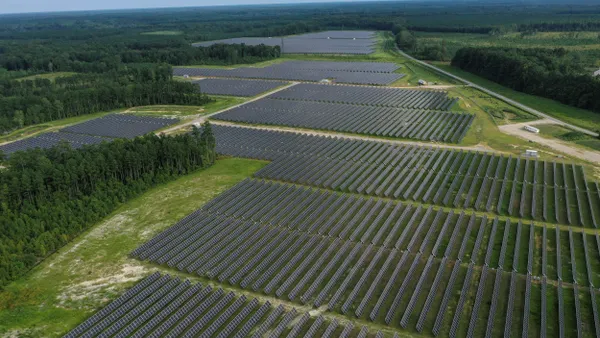Dive Brief:
- Hawaiian Electric (HECO) is defending its role in ongoing and potential delays to planned renewables projects that are key to Hawaii's longer-term clean energy goals, following the state Public Utilities Commission's decision last month to take a closer look at the company's interconnection processes and plans to retire and replace fossil fuel plants.
- Last year, concerns were raised during status conferences hosted by the commission that HECO's interconnection processes are causing unnecessary delays and increasing costs to renewables projects currently under development. But in a filing on Friday, HECO said that these are not solely attributable to the company, and depend also on developers and their consultants.
- Regulators are in part worried that delays to the renewables projects could threaten plans to retire fossil fuel generation, including a 180 MW coal-fired plant in Oahu. "We've seen in the past when there's been an unanticipated shortfall, that we've had to resort to other types of utility-scale fossil-based extensions or additions — and so I think the commission is really focused on not letting that happen," Kylie Wager Cruz, staff attorney with Earthjustice, said.
Dive Insight:
HECO is pursuing 20 utility-scale solar-and-storage and standalone storage projects as part of Hawaii's broader goal to reach 100% renewable energy generation by 2045, all of which are scheduled to come online in 2022 and 2023. They're an important part of the utility's plan to retire the 180 MW AES coal plant — which serves roughly 15% of demand in Oahu — by the end of the 2022, as well as the 38 MW oil-fired Kahului power plant by the end of 2024. HECO also hopes to retire two units of its Waiau oil-fired plant, totaling 49 MW, as soon as possible.
But regulators are concerned that issues with HECO's interconnection processes could set back this renewable energy development. Last month, the PUC opened a docket to track the status of these projects as well as the utility's Community-Based Renewable Energy (CBRE) program, which allows customers to subscribe to a portion of solar energy from a larger facility.
With the Oahu coal plant coming offline at the end of 2022, "the commission is starting to see that if these renewable energy projects become delayed, then it could create really big problems for the grid and also affect our ability to address climate change on a broader level," Wager Cruz said.
While HECO agreed that it has a role to play in ensuring timely interconnection, the company pointed to other contributing factors as well.
"In particular, developers and their consultants have important responsibilities to facilitate timely initiation of the process," by avoiding last-minute changes to the projects and providing adequate models of the planned facilities, the utility said in its filing.
HECO also detailed some of the remedies it's exploring. It has reached out to project developers "encouraging collaboration to accelerate schedules," and is meeting with some biweekly to keep the projects on schedule. And for projects that were part of the second stage of the initial bidding, HECO has been requesting information earlier on in the process, and prioritizing systems that will come online earlier.
HECO intends to replace most of the power from the Oahu coal plant with the 135 MW Kapolei energy storage project, which is scheduled to come online in June 2022, before the plant is retired. The utility has also identified contingency plans in case the project is delayed beyond 2022, including conducting a request for proposals for 60 MW of capacity, or installing or leasing 20 MW, four-hour batteries to an existing solar facility. If the Kapolei project is canceled for some reason, one of its options is to reactivate two units of a Honolulu fossil fuel plant, which was deactivated in 2014, until enough renewable projects are online.
"Improving the interconnection process is work that involves everyone — the utility, developers, regulators. We're committed to getting it done, collaborating with developers to get more renewable energy on our grids and doing it in a way that's safe, reliable and affordable," Hawaiian Electric spokesperson Peter Rosegg said in an email.
Others, however, are more critical of HECO's role in the process.
"[T]he utility has never been willing to reach out to the communities in advance to figure out where projects are acceptable and not acceptable," said Henry Curtis, executive director of environmental group Life of the Land. "Second, the utility has no incentive to move quickly on third-party projects."
The interconnection process needs a more comprehensive overhaul, that allows for different tiers of projects to be subject to a more streamlined and expedited process with controlled costs built in, Wager Cruz said. She cautioned that the remedies outlined by HECO in its filing may not go far enough, as they don't include many of the proposals that Earthjustice has made to standardize, streamline and control costs related to community solar projects.
"For larger projects … the ball is really in HECO's court to take a really close look at whether or not every single layer of study is necessary for every single project, or if they can develop standards in terms of equipment required so a developer can avoid the need for excessive studies and costs," she added.















